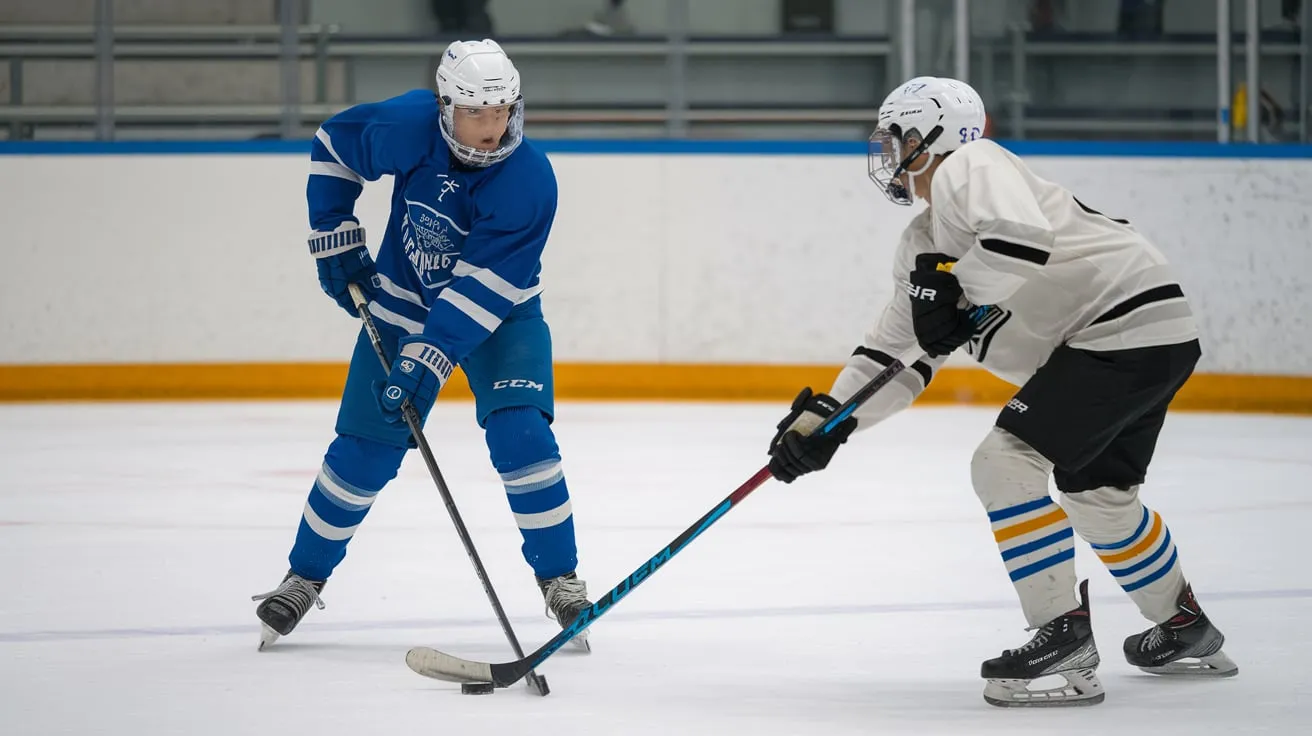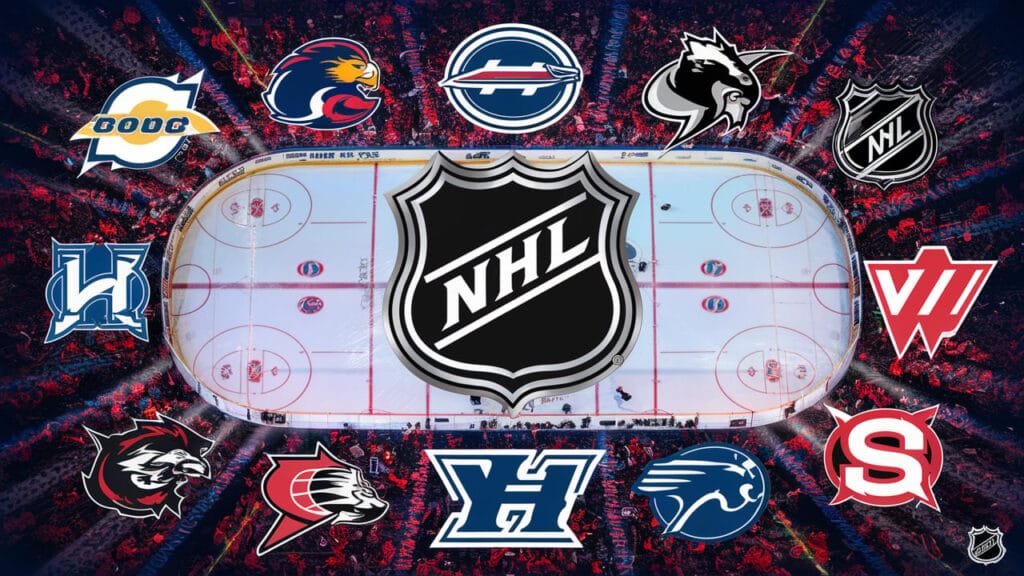Introduction: Why Hockey Passing is Key to Winning Team Play
Passing is the backbone of hockey, enabling teams to maintain possession, set up scoring opportunities, and outmaneuver opponents. Teams with strong passing techniques dominate the ice by creating seamless plays that capitalize on gaps in the opposition’s defense. In fact, professional hockey teams with high passing accuracy (averaging above 75%) often achieve significantly better win rates compared to those with less precise passes.
The relevance of mastering hockey passing techniques goes beyond professional levels. For amateur and youth players, honing passing skills builds confidence, enhances team synergy, and fosters a deeper understanding of the game. Whether you’re coaching a beginner team or refining advanced players’ skills, improving passing techniques is integral to elevating team performance.
In this guide, we’ll explore:
- Fundamental and advanced passing techniques.
- Key drills to boost precision and timing.
- Strategies for integrating passing into effective team play.

The Fundamentals of Hockey Passing
Before diving into advanced strategies, it’s essential to master the basics. A solid understanding of fundamental passing techniques ensures consistency and accuracy in high-pressure situations.
Types of Hockey Passes
- Forehand Pass
- The most common type of pass, ideal for short to medium distances.
- Execution: Keep your blade flat on the ice, aim towards your teammate’s stick blade, and use a sweeping motion to push the puck.
- Backhand Pass
- Often used when a forehand pass isn’t feasible.
- Execution: With the backhand of your stick blade, push the puck in the desired direction while keeping control.
- Saucer Pass
- Perfect for lifting the puck over obstacles, like an opponent’s stick.
- Execution: Flick your wrist with a scooping motion, generating lift to clear obstructions while maintaining accuracy.
- One-Touch Pass
- A quick pass to maintain momentum or exploit an opening.
- Execution: Receive the puck and redirect it instantly with minimal stick movement.
Importance of Passing Accuracy
Passing is only effective if it reaches its intended target. Studies show that players with passing accuracy above 80% significantly contribute to higher possession rates. To improve:
- Focus on stick-to-stick passes.
- Practice aligning your body correctly before passing.
- Maintain a low follow-through for increased precision.
Advanced Hockey Passing Techniques
To dominate in competitive settings, players need to go beyond fundamentals and master advanced passing methods.
Bank Passes
- Use the boards to redirect the puck to a teammate.
- Effective in breaking out of defensive zones or bypassing defenders.
Cross-Ice Passing
- A high-risk, high-reward technique for switching play across the rink.
- Often used during power plays to exploit defensive weaknesses.
Drop Pass
- Used to confuse opponents by feigning an attack, only to pass backward to a teammate.
- Requires precise timing and awareness of your teammates’ positions.
Fake Pass and Deceptive Moves
- Adding an element of deception increases the likelihood of fooling opponents.
- Techniques include looking in a different direction or using subtle stick movements to disguise intent.
Essential Drills to Enhance Passing Skills
Drills are critical for reinforcing passing fundamentals and introducing advanced techniques. Consistent practice leads to measurable improvement in passing speed and accuracy.

Partner Passing Drill
- Objective: Improve short and medium-range passing accuracy.
- Setup: Players face each other and pass the puck back and forth.
- Metrics: Aim for at least 30 consecutive passes without error.
Circle Passing Drill
- Objective: Enhance spatial awareness and quick decision-making.
- Setup: Players form a circle, passing the puck to each other in sequence.
- Variation: Introduce multiple pucks for added difficulty.
Obstacle Passing Drill
- Objective: Master saucer passes and improve passing under pressure.
- Setup: Place cones or sticks as obstacles and practice passing over or around them.
Small-Area Games
- Objective: Integrate passing into game-like scenarios.
- Setup: Divide players into small teams in confined spaces, encouraging quick passes and strategic plays.
Strategies for Better Team Play
Effective team play relies on seamless passing combined with communication and positioning.
Creating Passing Lanes
- Players should constantly move to create open lanes for passing.
- Coaches should emphasize off-the-puck movement during practice sessions.
Triangular Formations
- Positioning three players in a triangle increases passing options and creates scoring opportunities.
- Commonly used during power plays to exploit numerical advantages.
Communication and Signals
- Verbal and non-verbal communication enhances passing efficiency.
- Use calls like “boards” or “time” to provide teammates with situational awareness.
Common Mistakes and How to Avoid Them

Even skilled players occasionally falter in passing due to common errors.
- Over-Passing: Attempting too many passes instead of taking a shot can waste opportunities.
- Telegraphing Intentions: Opponents can intercept predictable passes.
- Improper Weighting: Passes that are too hard or too soft fail to connect effectively.
Solutions
- Mix passing techniques to keep opponents guessing.
- Practice controlling pass speed based on distance.
Benefits of Strong Passing in Team Play
- Improved Possession: Teams with better passing maintain control longer, increasing scoring chances.
- Higher Scoring Efficiency: Quick and accurate passing opens up clear shooting lanes.
- Team Morale: Effective passing builds trust and cohesion among players.
How Analytics and Data Shape Passing Techniques
Modern hockey leverages analytics to refine passing strategies. Key metrics include:
- Pass Completion Rate: Tracks the percentage of successful passes.
- Zone Entries: Measures effectiveness in advancing the puck into attacking zones through passes.
- Expected Goals (xG): Indicates scoring opportunities created via passes.
People Also Ask
What are the different types of passes in hockey?
Hockey includes various passing techniques, each suited for specific scenarios. The forehand pass is the most common, executed with the forehand side of the stick blade for medium to short distances. The backhand pass is equally important, allowing players to pass effectively when a forehand pass isn’t feasible.
How can I improve my hockey passing skills?
Improving passing skills in hockey requires a combination of practice, technique, and game awareness. Practicing regularly with drills designed to enhance accuracy and timing is essential. Focus on maintaining a flat blade during passes and following through in the intended direction.
Why is passing important in hockey?
Passing is the foundation of effective team play in hockey. It facilitates puck possession, allowing teams to control the game and create scoring opportunities. Accurate and timely passes can exploit defensive weaknesses, opening up shooting lanes.
How can teams improve passing during games?
Teams can enhance their passing by adopting specific strategies and maintaining discipline on the ice. Structured formations, such as triangles, provide multiple passing options and make it easier to transition the puck through zones.
Conclusion: Elevate Your Team’s Game with Precision Passing
Mastering hockey passing techniques is crucial for creating a cohesive and effective team. By focusing on fundamentals, incorporating advanced techniques, and practicing targeted drills, players can significantly enhance their performance. Coaches should emphasize continuous improvement through analytics and real-game applications, ensuring players stay sharp and adaptive.
With passing at the core of every play, teams that invest in mastering these techniques will see tangible improvements, from better puck control to higher win rates. Prioritize precision, practice with purpose, and watch your team dominate the ice.




